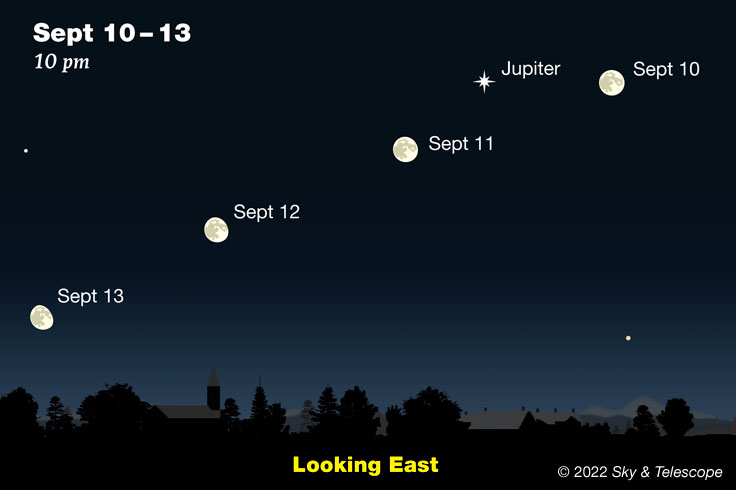Have you ever looked up at the night sky and tried to figure out what’s what? September’s Sky Tour astronomy podcast will heighten your enjoyment of the bright stars and constellations now overhead.

Listen Here:
Podcast: Play in new window | Download
Subscribe: Apple Podcasts | Google Podcasts | Spotify | Email | RSS | More
Have you ever looked up at the night sky and tried to figure out what's what? This month’s Sky Tour astronomy podcast can help you out! No experience or equipment is necessary — just download or stream the audio file and take it with you outside.
For example, all those long summer days are coming to an end. September’s equinox marks the celestial end of summer and the beginning of autumn in the Northern Hemisphere. This year it takes place on the 22nd at 9:04 p.m. Eastern Daylight Time. At that moment the Sun shines directly overhead as seen from the equator. Days and nights are both 12 hours long — that’s where the word equinox comes from — and no matter where you live the Sun rises due east and sets due west.

Sky & Telescope
Another celestial event associated with this equinox is the Harvest Moon. Traditionally, it’s the name assigned to the Full Moon that falls closest to the autumnal equinox. The Harvest Moon gets this name from a geometric oddity. Because the lunar orbit makes a shallow angle with respect to the eastern evening horizon at this time of year, the Moon rises only about 30 minutes later on successive evenings, not the usual 50 minutes or so. So it never really gets dark between sunset and moonrise for several successive evenings, a boon to farmers working late to try to harvest their crops at day’s end.
Saturn reached opposition — positioned opposite the Sun in our sky— in mid-August, and now you can dependably find this ringed wonder low in the southeast as evening twilight fades.
This month it’s Jupiter’s turn. The king of planets hits the opposition point on the 26th. After that, and for the rest of 2022, you can watch Jupiter and Saturn gliding slowly westward week by week. The Moon makes a pass through this part of the sky starting on the 7th, when its waxing gibbous disk sits to Saturn’s lower right, then on the 9th, when its midway between the two planets, and then on the 11th, when the Moon and Jupiter rise close together in the east as twilight ends.
You can learn lots about what else is currently showing in the night sky from this month’s 12-minute-long podcast. It’s designed to heighten your enjoyment of all the bright stars and constellations now overhead — and no experience or equipment is needed! All you need is a little curiosity, a clear sky, and this month’s Sky Tour episode.
 0
0
Comments
You must be logged in to post a comment.